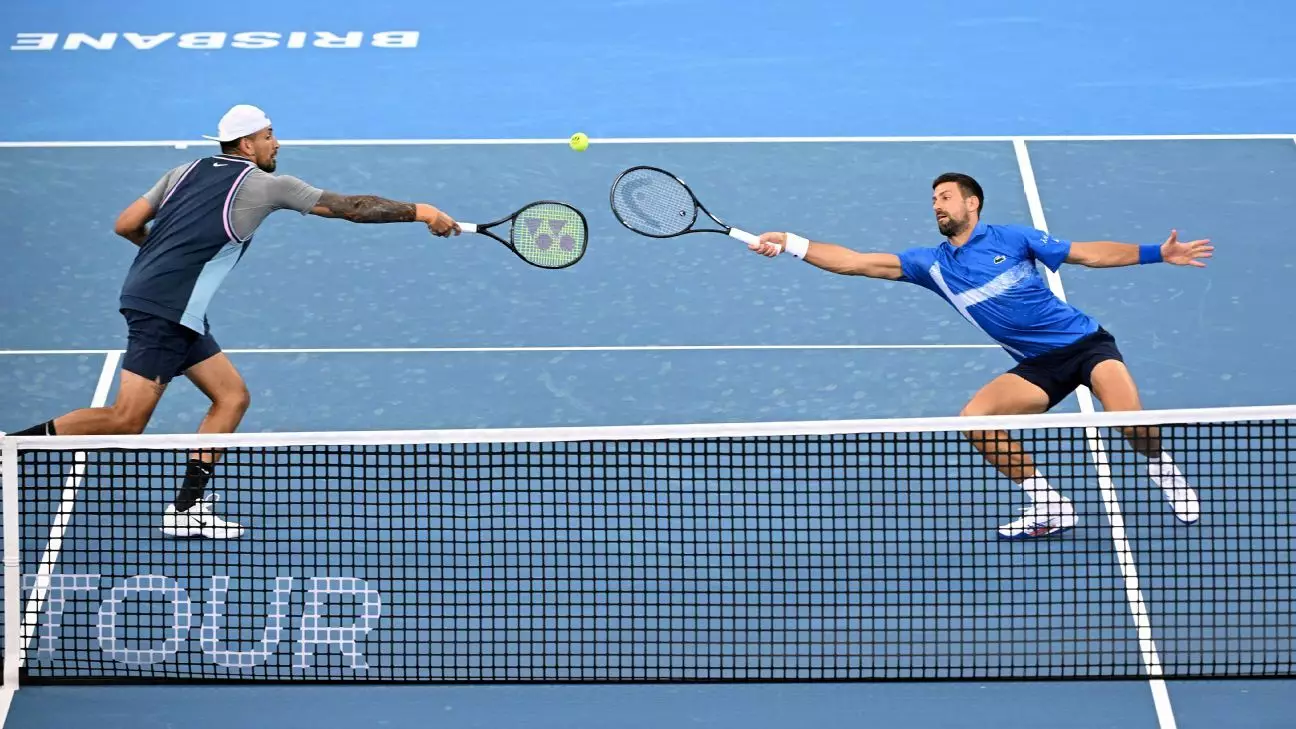In the world of professional tennis, resilience is a prized trait, and few exemplify this better than Nick Kyrgios. The Australian tennis star has recently made headlines with his comeback at the Brisbane International. Following a surgery on his wrist that sidelined him for an extended period, Kyrgios returned with not just hopes but also a palpable enthusiasm, ready to make his mark once again. Yet, despite the excitement surrounding his comeback, the reality has proven to be an intricate dance between setbacks and determination.
His return was heralded with a promise to partner with the legendary Novak Djokovic in the men’s doubles competition. Expectations were high, as fans eagerly awaited what this duo would offer on the court. Following a grueling three-set battle against French player Giovanni Mpetshi Perricard, which marked Kyrgios’ much-anticipated singles return, the momentum began to falter. The match was a testament to Kyrgios’ competitive spirit, yet it also raised concerns. Could he withstand the pressure and physical demands of consecutive matches so soon after surgery?
Even when facing physical discomfort, Kyrgios managed to display a vibrant energy on the court, throwing down serve speeds that peaked over 200 km/h and showcasing impressive agility. However, the toll of the previous day’s match was apparent. The wrist, still healing, occasionally prompted Kyrgios to grasp his bicep, a reminder that this comeback was far more than a triumphant return. In fact, the mental aspect of coping with chronic pain is often overlooked when we celebrate athletic achievements—something Kyrgios hinted at when he remarked on the unique nature of his post-surgery experience.
Indeed, as he prepared for the doubles match against top seeds Michael Venus and Nikola Mektic, the emotional stakes were as formidable as the players on the opposite side of the net. Even as Kyrgios and Djokovic faced defeat with a tight score of 6-2, 3-6, and 10-8, it was noteworthy that Kyrgios walked off the court with a smile. This attitude underlines a shift in Kyrgios’ perspective—one that suggests he values participation and performance over mere victory.
Kyrgios candidly discussed the complexity of his recovery, which included a staggering “six holes in my hand and one in my arm” from surgery. This phrase paints a vivid picture of the severity of his condition and adds an emotional weight to his journey back to the sport he loves. In many ways, Kyrgios is not just fighting to reclaim his former status; he is grappling with an entirely new reality as an athlete.
Notably, Kyrgios has recognized the pitfalls of youthful indiscretion. “I used to abuse being youthful,” he remarked, hinting at a more profound journey of personal growth alongside his athletic endeavors. The acknowledgment of past mistakes reflects a maturation process that may bolster his future prospects, particularly as he contemplates a potential appearance at the Australian Open later this month.
The immediate future remains uncertain. Kyrgios plans a return to Canberra for rest and recovery, indicating he understands the necessity of self-care in a sport known for its physical strain. Djokovic, poised to chase his 100th ATP title, looks ahead to his next challenge without Kyrgios by his side. Nevertheless, Kyrgios’ resilience and willingness to embrace this comeback journey, despite its challenges, offers a glimmer of hope not just for himself, but for fans and aspiring athletes alike.
The saga of Nick Kyrgios serves as a reminder that the path to recovery is often fraught with obstacles. As he navigates this new chapter, there is much to learn from his experience—a blend of perseverance, self-awareness, and an optimistic outlook in the face of adversity.


Leave a Reply